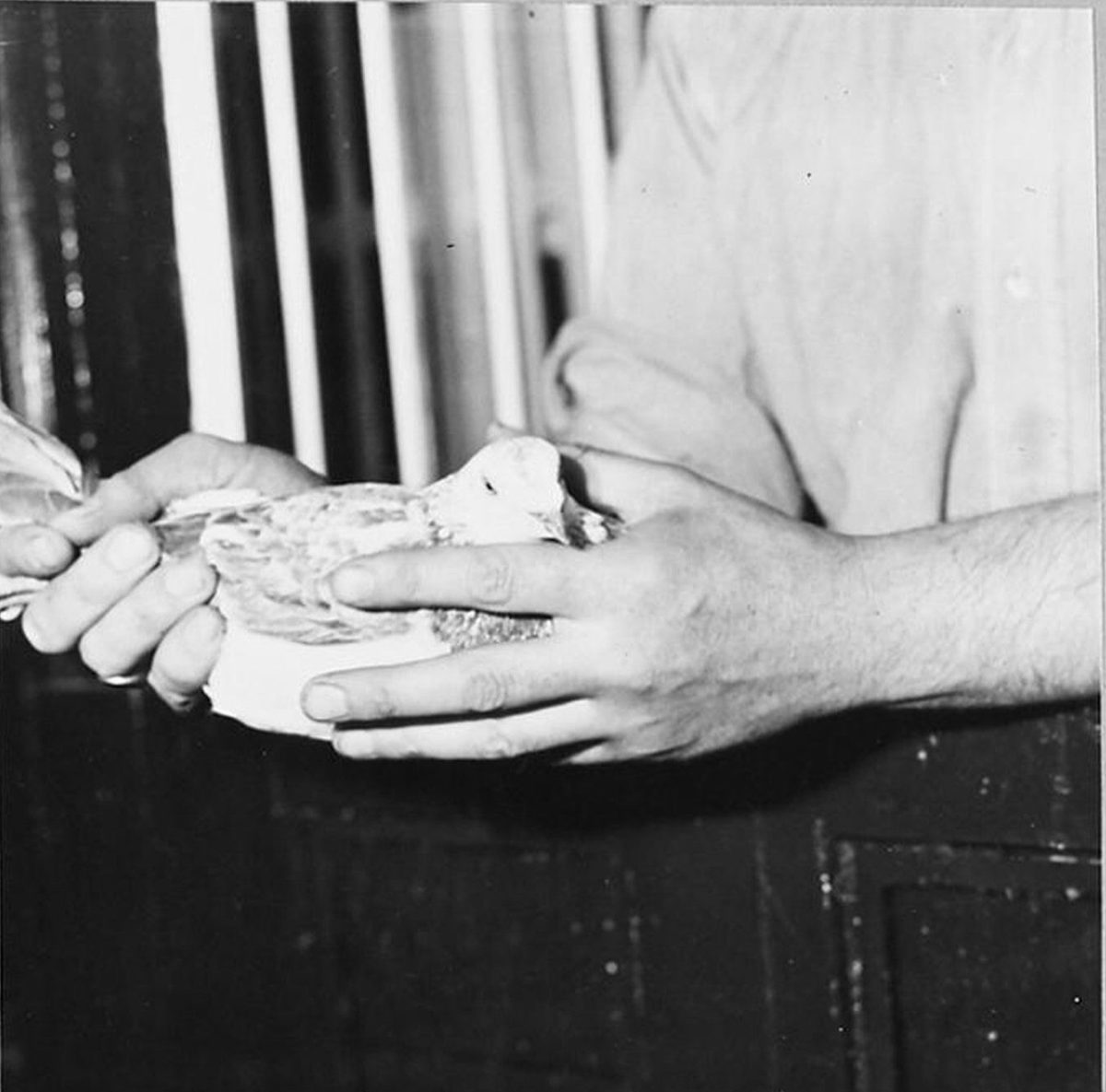On June 6, 1944, the first report of the D-Day landings arrived at Thorney Island’s Royal Air Force base near Portsmouth, England. The winged messenger who relayed the news at 1:46 PM was a grizzle cock pigeon named Gustav.
A message penned by Reuters correspondent Montague Taylor was attached to the pigeon’s leg, containing the first news of the Allied troop landings on the beachheads.
“We are just twenty miles or so off the beaches. First assault troops landed 0750. Signal says no interference from enemy gunfire on beach. Passage uneventful. Steaming steadily on. Formations Lightnings, Typhoons, Fortresses crossing since 0545. No enemy aircraft seen.”
Although the loyal RAF homing pigeon was known as a “reliable” flyer, this fateful journey had been difficult for him. Gustav flew for five hours and 16 minutes across a distance of 150 miles to deliver the news, amid darkened skies and a headwind of about 50 miles per hour, according to the Imperial War Museum. Aside from difficult weather conditions, the perils of war—including hawks trained by the Nazis to kill Allied carrier pigeons—were omnipresent dangers.
Raised in Cosham, Hampshire, Gustav was one of six pigeons given to Taylor to assist with his war reporting. Trained courier pigeons were typically transported to battlefronts in wicker baskets and released to convey critical messages when the situation demanded. Taylor is said to have first received Gustav in a basket along with four other birds as he prepared to provide coverage of the Allied landings in Normandy.
“The invasion army have thought of everything, including carrier pigeons to carry the big news home if all else fails,” reported Taylor, according to author Bernard O’Connor in “Bletchley Park and the Pigeon Spies.” “A Wing Commander arrived here only a few hours before I arrived on my [tank carrying] landing ship and presented me with a basket of four pigeons, complete with food and message carrying equipment.”
After taking off from a warship at the Normandy coast and fluttering for hours through war-torn skies, the pigeon safely reached his RAF loft at Thorney Island. Yet like other military service members in wartime, Gustav did not return to scenes of peace and tranquility when he arrived back on base. Thorney Island was then a base for squadrons of Hawker-Typhoon fighter-bomber aircraft tasked with knocking out German radar on the coast of France and, once the D-Day landings commenced, with launching ground attacks on German forces. Although he had left the dangers of Normandy behind, the pigeon had flown back into a hotbed of wartime activity.
Gustav’s courage did not go unrecognized. On September 1, 1944, he received the PDSA Dickin Medal for gallantry. The award, created in Great Britain in 1943, has become known as the equivalent of the Victoria Cross for animals. His citation for the medal credits him for “delivering the first message from the Normandy beaches from a ship off the beachhead while serving with the RAF on 6 June 1944.” At Gustav’s award ceremony, he received a kiss along with his ribbon, with the moment captured on a newsreel.
Gustav became one of 32 courier pigeons to receive the Dickin Medal. A fellow winged recipient was the Duke of Normandy, who also became famous for his role in delivering a critical message on D-Day. The training, care and feeding of pigeons became a very serious business during World War II as many homing pigeon enthusiasts stepped up to contribute trained birds to the war effort.





